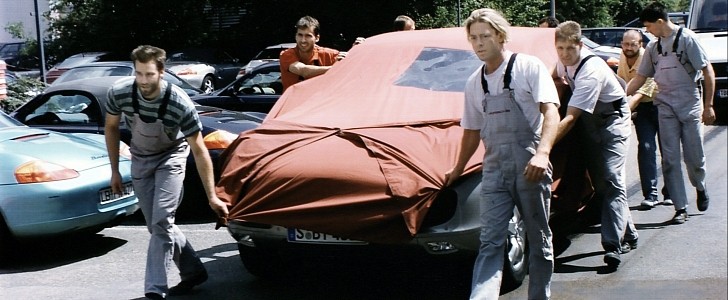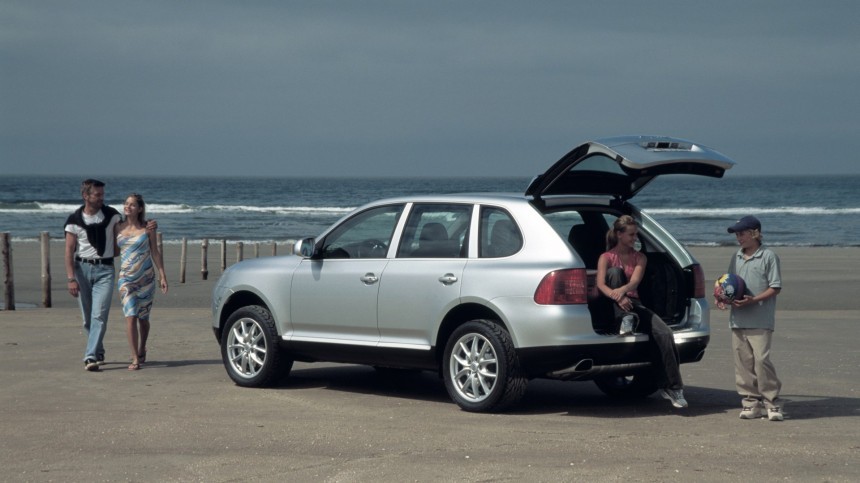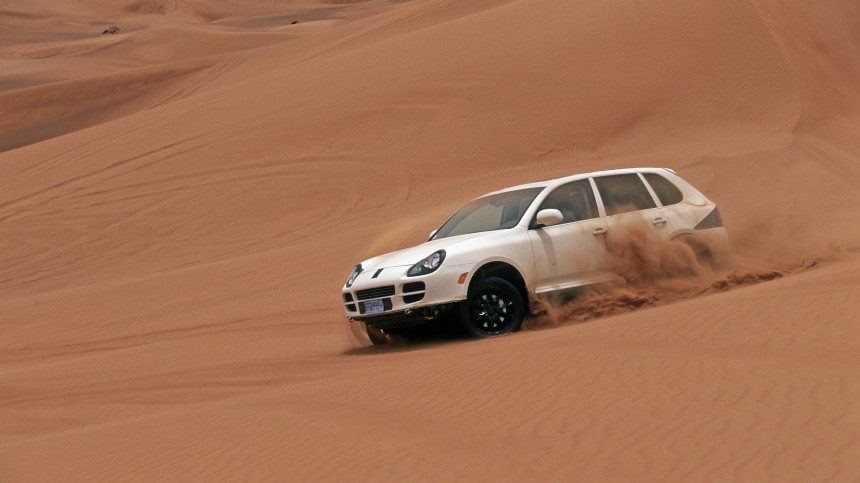This year, the Porsche Cayenne turns 20 years old. If you are not feeling old yet, this might be a good time to let that happen, even for just a bit. Ready? The project behind the Cayenne is older than you might expect, as the third Porsche model was a quest that began back in 1996. Ferry Porsche predicted that a Porsche SUV would be successful as early as 1989.
Initially, people were not that excited to learn that Porsche was about to launch an SUV. The German brand was only making sports cars at the time, the 911 and the Boxster, and that was it. Introducing an SUV, of all things, was incredible, but Porsche insisted that it is a sound business decision.
Well, we do not know what the detractors of the Cayenne are saying today, but we do know that the millionth Cayenne had rolled off the production line back in the Summer of 2020. Last year, Porsche delivered well over 80,000 units of the Cayenne. Initially, back in 2002, the German company expected to sell about 25,000 units of the Cayenne per year.
As a reminder, Porsche went through financial hell at the end of the 80s and in the early 90s, and the Boxster was finally turning the page for the company in the mid-to-late 90s. Well, some people who were great with numbers figured out that the 911 and the Boxster were not enough for long-term success. So, a third model was required, and it had to sell more units than the two combined.
Initially, Porsche dismissed the idea of a sedan or a four-door coupe, even though a concept of this kind had been designed. Instead, the German marque had decided to build something suitable for family touring, and the final pick was between an SUV and a minivan.
Since the latter class did not represent premium models in the U.S., which was the biggest market for Porsche at the time, the decision was made to build an SUV.
Even since the mid-90s, the SUV segment showed signs of growth potential in all the markets where Porsche was doing well, as well as in the countries where the company wanted to get better results. Well, someone made the right decision on this one, as figures and estimates had already shown.
As a side note, most (if not all) vehicle manufacturers work with these estimates, but it does not always pan out. Failure may come because of numerous factors, so you always have a leap of faith when a new model is launched.
The first generation of the Cayenne, which is referred to as E1 internally, managed to sell 276,652 units, which comes down to almost 35,000 units per year in each of the eight model years. Thanks to such results, the German company was capable of funding other projects, and this moved on from fiscal year to fiscal year.
Initially, Porsche had discussed a partnership with Mercedes-Benz for the upcoming SUV, but it was over before it began. While Mercedes-Benz was getting ready to launch the first-ever M-Class, its neighbors at Porsche had too many disagreements with them to enable the continuation of the project.
It did not take long until someone thought about Ferdinand Piech, the grandson of the Porsche company founder, Ferdinand Porsche. Piech, who is also responsible for models like the Veyron and Phaeton, among others, recognized the potential and signed a deal with Porsche to develop what was called Project Colorado back in 1997.
The development process was done separately, and the vehicles did not share engines or chassis tuning but had the same shape for their doors as well as interior components. Both models proved to be successful, and their collaboration proved to be a sign of things to come if we think of the Porsche brand today and the Volkswagen Group.
The V8-engined version of the brand's first SUV came with the Porsche Traction Management system, and its system could achieve any power ratio between the rear and the front axle. It did have a stock bias of 62 percent to the rear. A low-range transfer box was also present, and the same can be said about a fully locking center differential.
The first-gen Cayenne was the first model offered by the marque with the new PASM, which is Porsche's Active Suspension Management. It was also available with an optional air suspension that could achieve an impressive ground clearance of up to 27.3 cm (about 10.75 in). In entry-level form, it came with a V6, but the more powerful models had a V8, and a turbocharged V8, respectively.
The conventional-sprung model had 21.7 cm (about 8.54 in or about twice the long edge of a credit card), which is more than enough to handle more off-roading than most customers would dare do.
Since the Cayenne is set to celebrate its 20th anniversary this September, you should expect to see an anniversary edition this Autumn to mark the occasion. Until then, try to remember what you thought when you first heard that Porsche was building an SUV. Not happy thoughts, right? Well, the company has proven it knows what it is doing when launching new products.
Well, we do not know what the detractors of the Cayenne are saying today, but we do know that the millionth Cayenne had rolled off the production line back in the Summer of 2020. Last year, Porsche delivered well over 80,000 units of the Cayenne. Initially, back in 2002, the German company expected to sell about 25,000 units of the Cayenne per year.
As a reminder, Porsche went through financial hell at the end of the 80s and in the early 90s, and the Boxster was finally turning the page for the company in the mid-to-late 90s. Well, some people who were great with numbers figured out that the 911 and the Boxster were not enough for long-term success. So, a third model was required, and it had to sell more units than the two combined.
Initially, Porsche dismissed the idea of a sedan or a four-door coupe, even though a concept of this kind had been designed. Instead, the German marque had decided to build something suitable for family touring, and the final pick was between an SUV and a minivan.
Even since the mid-90s, the SUV segment showed signs of growth potential in all the markets where Porsche was doing well, as well as in the countries where the company wanted to get better results. Well, someone made the right decision on this one, as figures and estimates had already shown.
As a side note, most (if not all) vehicle manufacturers work with these estimates, but it does not always pan out. Failure may come because of numerous factors, so you always have a leap of faith when a new model is launched.
The first generation of the Cayenne, which is referred to as E1 internally, managed to sell 276,652 units, which comes down to almost 35,000 units per year in each of the eight model years. Thanks to such results, the German company was capable of funding other projects, and this moved on from fiscal year to fiscal year.
It did not take long until someone thought about Ferdinand Piech, the grandson of the Porsche company founder, Ferdinand Porsche. Piech, who is also responsible for models like the Veyron and Phaeton, among others, recognized the potential and signed a deal with Porsche to develop what was called Project Colorado back in 1997.
The development process was done separately, and the vehicles did not share engines or chassis tuning but had the same shape for their doors as well as interior components. Both models proved to be successful, and their collaboration proved to be a sign of things to come if we think of the Porsche brand today and the Volkswagen Group.
The V8-engined version of the brand's first SUV came with the Porsche Traction Management system, and its system could achieve any power ratio between the rear and the front axle. It did have a stock bias of 62 percent to the rear. A low-range transfer box was also present, and the same can be said about a fully locking center differential.
The first-gen Cayenne was the first model offered by the marque with the new PASM, which is Porsche's Active Suspension Management. It was also available with an optional air suspension that could achieve an impressive ground clearance of up to 27.3 cm (about 10.75 in). In entry-level form, it came with a V6, but the more powerful models had a V8, and a turbocharged V8, respectively.
The conventional-sprung model had 21.7 cm (about 8.54 in or about twice the long edge of a credit card), which is more than enough to handle more off-roading than most customers would dare do.
Since the Cayenne is set to celebrate its 20th anniversary this September, you should expect to see an anniversary edition this Autumn to mark the occasion. Until then, try to remember what you thought when you first heard that Porsche was building an SUV. Not happy thoughts, right? Well, the company has proven it knows what it is doing when launching new products.


















